If you overheard Chuck DeCoste talking about his job, you might get the impression that he works in a kindergarten classroom. He talks a lot about positive reinforcement, discouraging bad behaviours, and the importance of being a good caregiver.
But DeCoste doesn’t work with kids. He’s the Vancouver regional co-ordinator for the Raptors, a wildlife management and conservation organization, and spends his days communing with hawks, eagles and falcons.
You might spot him or one of his colleagues at BC Children’s Hospital, chasing off nesting pigeons, or at the Vancouver International Airport, preventing birds from flying into your airplane. (The Canada goose, incidentally, is the third-deadliest species when it comes to aircraft collisions.) When I met him, he was at Granville Island, where his team uses hawks to chase away lunch-stealing seagulls.
DeCoste, who has been working with the Raptors for a decade, tells me there is no one path to this line of work. Long ago, he was doing his carpentry apprenticeship on Grouse Mountain when he stumbled across Robyn Radcliffe, co-founder of the Raptors, “wandering through the fog.” Assuming she was a lost hiker, he asked if she needed help. “And she told me, no, I work here too, I’m doing flying demonstrations.”
DeCoste continued with his carpentry career, but he and Radcliffe stayed in touch. “She started introducing me to birds, letting me hold one on a glove,” he recalls, smiling. “I've always been interested in dinosaurs, ever since I was a little kid, and this is the closest I’d ever be able to get to one.” When he grew tired of building custom homes in West Vancouver, he called Radcliffe up, and she encouraged him to join the Raptors. The rest is history. This interview has been edited for length and clarity.
Your path to this work is pretty unique. How can other people find their way to falconry? It’s not exactly a career you learn about in school.
I wish high school guidance counsellors told people about these kinds of jobs! It really depends on the province. Some provinces have programs, where you work through a two- or three-year apprenticeship with a journeyman falconer, and then you get your own bird. Those are really good programs, but British Columbia doesn’t have that.
I learned on the job. I worked with my colleague, Emily Fleming, and she taught me everything I know. Even though it isn’t an official apprenticeship program here, for the first three years I had the benefit of working side by side with her. She was an incredible teacher.
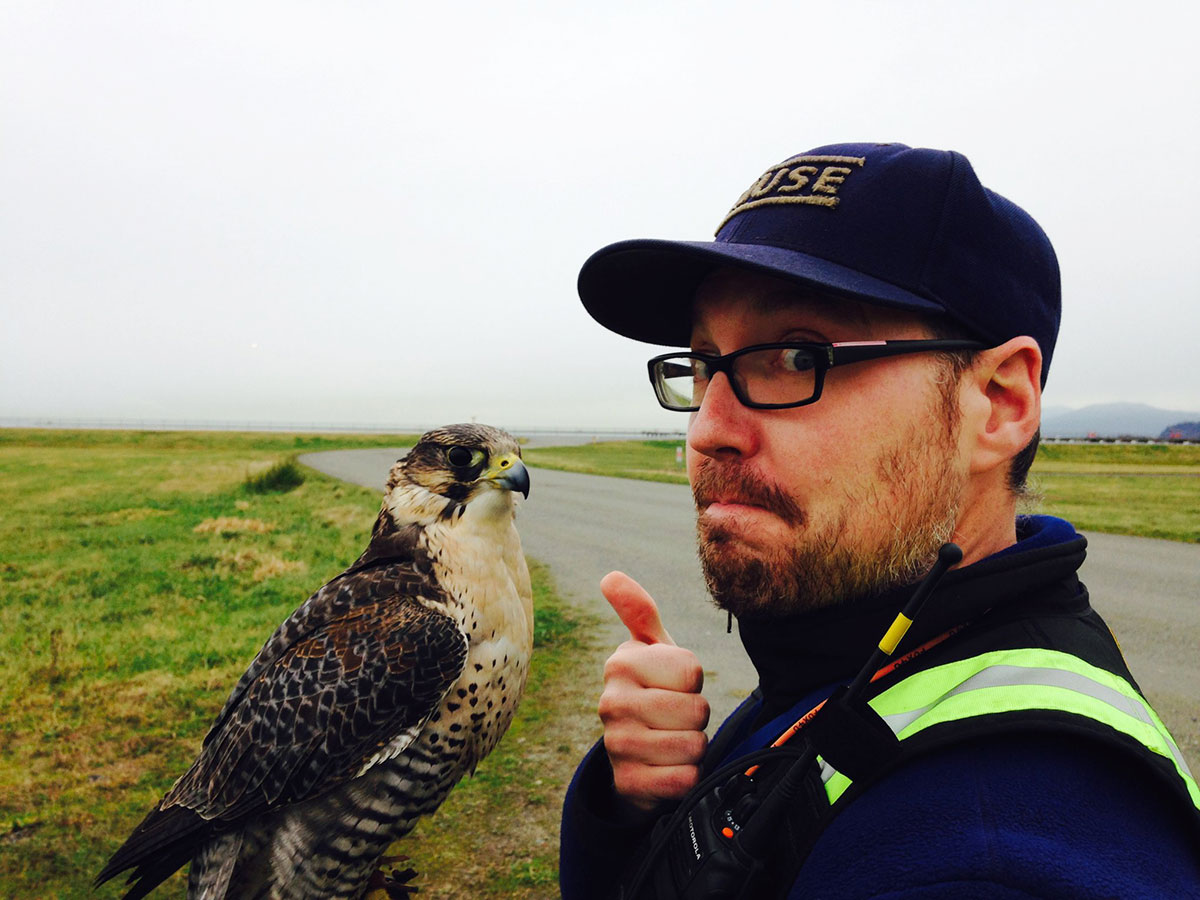
What kinds of skills were you learning?
It’s a really difficult thing to teach, because so much of it is based on feel. You’re learning the body language of the bird. It’s not like learning how to use a skill saw, which is going to act the same way every time you plug it in and press a button. You need to learn to make relationships, and just like making relationships with people, there’s no formula that works every time. So you’re learning to open yourself up to a bird, to watch and pay attention, to make them comfortable. So much of our job is about positive reinforcement, so that when a bird goes flying and you ask them to come back, they choose to come back.
Sounds like parenting. What’s the most challenging part of this job?
The most challenging part of the job is the same as the most rewarding part. Here on the mainland alone, we have eight to 10 staff, and we work with around 20 birds. So we’re essentially co-parenting these birds, but we can’t have verbal communication with them. We have to make sure we’re all on the same page, we’re delivering a consistent message to those birds, and we’re not stepping on each other’s toes. But it’s rewarding because I think we’re really good at it.
You have to be able to take your ego out of it, so when you see a negative behaviour, you can have that conversation together with your co-workers. Like, What’s going on? What are we doing that is triggering this behaviour?
What kind of behaviours are you trying to curb?
Let’s say one of our little birds decides that it wants to go steal food from the face [of the Vancouver Landfill]. That’s just a hawk being a hawk: it sees food, it wants it, it eats it. You can’t blame the bird. Instead, you have to take a hard look at what your co-workers are doing, so you can figure out how to shift his focus to something else. Maybe you fly him further from the garbage, or maybe you offer him more tidbits. We give them a lot of chicken and quail — we try to keep their diets as close to their natural diet as possible.
What kind of birds do you work with?
We use a lot of Harris’s hawks. They’re incredibly versatile. They’re not a local species — they come from a little further south, between Arizona and the northern edge of Peru. [Size-wise], they’re between a crow and a raven. The ones we raise are born at our centre. They’re the only true social raptor species in the world. They’re a pack animal. So ours are really well-socialized, and they can be somewhere like [Granville Island] without getting stressed out. They’re really friendly and totally at home here.
But we use a lot of different raptor species. I compare it to golf — you need the right club for the right golf. Actually, the word “caddy” is an old falconry term, which used to be “cadge.” Back in the day, kings or queens would have a falconer who would train all their birds, and when they hunted, the cadge would have this cool portable perch with all these different birds sitting around them. Depending on the quarry, the cadge would pick the right bird for the job. And that’s what we do.
So, somewhere like the airport, we will make use of eagles and falcons, because they require a ton of air space to do their job effectively. I work a lot with Hercules — he’s a bald eagle, and he’s my big, beautiful baby boy. He’s been coming to the [Vancouver International Airport] since we started working there, when he was a really young bird, just to get him accustomed to all the sights and sounds. And we use him primarily to deter snow geese, because they react powerfully to bald eagles, who are their natural predators.
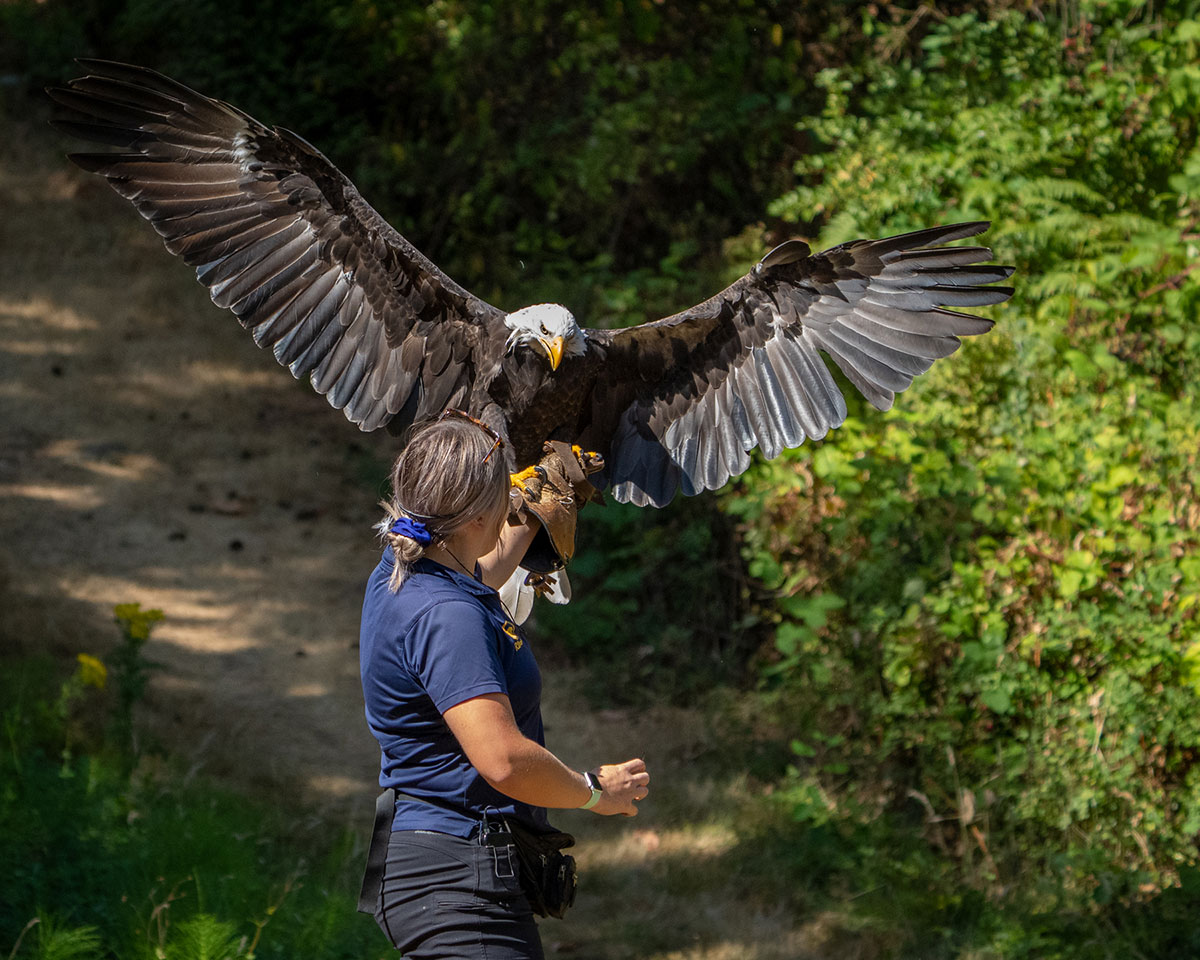
What are some reasons that you would use birds of prey as wildlife deterrents? I’ve seen Sully so I know about bird strikes.
It’s very site-specific. Here, at Granville Island, it’s partly about keeping birds from eating all this food that’s really bad for them. We’re starting to pick up work in downtown Vancouver and Victoria, to keep birds from nesting on rooftops and damaging the infrastructure. Somewhere like the airport, they want to avoid bird strikes. Places like landfills and transfer stations, there are so many food attractants that it’s a safety hazard. Machine operators can’t see what’s going on in front of them because there are so many seagulls — some of the sites we work at, you’ll see ten or 15,000 gulls descending at once, it’s like a non-stop waterfall of birds. If you’re not afraid of birds, it’s pretty incredible.
There are also a lot of knock-on benefits to doing this work. We’re often asked about landfills: why prevent birds from eating this food? On top of the human safety aspect, and the preservation of infrastructure, keeping that food out of animals is better for their health. Having attractants like that artificially inflates the [bird] population, and then you see things like pandemics running through them and spreading disease through the area. And when you have gulls eating food out of landfills globally, the food in those areas is very high in nitrates. Then gulls are bathing in lakes, and their high-nitrate feces have the potential to cause an algae bloom and just flatten an ecosystem. So the more human food we keep out of them, the better.
What’s a typical day on the job like?
At most sites, we start quite early. Depending on the client, we’ll shift our start time, but somewhere like the airport we like to start around sunrise. It always starts the same way: we roll in and weigh the birds to make sure that they’re healthy. That’s our biggest indicator of how they’re doing. As we get them out [of the aviary], we can say hi to them and check that they’re not feeling ill or off. From there, you decide what birds will work in the morning, which ones will work in the afternoon, and then you load them into the car to patrol.
Some clients don’t want the bird just loose in the vehicle, which is fair, but at some sites with our birds and our own vehicles, we just let them hang out with us. They’ll just sit on the back of the seat and look over our shoulders. We drive around and look for areas where birds are starting to encroach, and when you find them, you take your bird out and let it fly. That’s pretty much the job. You cruise around, you take your bird hunting, it’ll mostly fail, but it’ll succeed at what it was meant to do, which is —
“Creating a landscape of fear!” [My favourite tagline from the Raptors website.]
That’s it! We’re setting up an artificially inflated sense of predation. So you watch your bird fly around and have a ton of fun, then you give it a nice reward, and then you get back in your car. At the end of the day, you bring it home, you weigh it again, you make sure it’s had enough to eat. You’re constantly balancing their needs and making sure they’re happy. If you have a bird that doesn’t want to come out with you, then it’s the wrong business model. We rely so heavily on these birds, and we need them to want to do what they’re doing.
We should all aspire to that much job satisfaction.
Totally. And working with these birds has changed how I work with people. The way we try to keep our birds happy and wanting to come to work every day is not so different from the way we work with people. You need to respect them, and respect that they have their own hopes, ambitions and desires.
How do you keep track of the success of your programs? Is that important?
Yes, that’s one of the big ways we’ve been able to prove how successful it is. When we started doing this, there was a lot of reluctance around using this as a wildlife abatement technique. But now, after 20 years, we have lots of data behind us. We track how many birds we’ve chased off daily, the size of the flocks we’re seeing year over year.
And the reason our programs are successful is because wild birds don’t habituate to the presence of our raptors, because they’re real predators. If you look at the United States, they’re still using things like firearms to clear birds from that sky. So let’s say you shoot six ducks — the next six who pass through aren’t going to learn any lessons from that. But when we put a falcon up in the sky, ducks are flying by and seeing that there is a predator in the air, so they start avoiding the area.
And because most of those birds are surviving, they’re learning year after year to avoid that area, so we’re pushing them out into a migratory area where it’s safer for them. And it’s safer for the people and the buildings that we’re hired to protect, and it’s all done in a way that doesn’t have a heavy environmental impact.
Do the birds ever escape?
Every once in a while you do lose a bird. There’s always a certain amount of randomness when you’re working with a wild animal. Things like crows and ravens represent a reasonable risk to us, because if they see one of our birds, their inclination is to mob and chase it. Or maybe one of our little falcons gets focused on chasing a duck, and before you know it, that bird has flown so far that it’s lost track of where it is. Fortunately, we have telemetry on all our birds, so we can find them. And generally when we do, they’re like, what took you so long? Where are my snacks?
But from time to time, you do lose a bird. And when you do, it’s devastating. It kills you when you know there’s this beautiful bird out there that’s lost and afraid, and you’re doing your best to get to it, and sometimes you can't.
What kind of temperament makes someone well-suited to this work?
Being calm, being even-keeled. You’ve got to be the adult in the conversation, right? If you’re getting frustrated and flying off the handle, you’ll make some very scary moments for that bird. You just can’t do it. It doesn’t mean that you can’t get frustrated. When you’re emotionally invested, of course you’ll have some feelings. But it’s recognizing that you need to take a step back and let someone else take a turn. Like I said, this job has taught me as much about people as it has about birds.
Aside from wildlife management, what other events do you do?
We’ve done some public education. We’ve done a few weddings. Tuari, one of our amazing Harris’s hawks — she’s a sensation, a one-in-a-million bird — she flew the ring down to Emily [Fleming, Vancouver operations manager] at her wedding.
We’ve also done a bit of filming here and there, and some festivals. I have a dream of doing a flying demonstration at the Royal Tyrrell Museum. One of these days I’ll send them an email to say, “Hey, how would you feel about having an education program with raptors, the descendants of dinosaurs?”
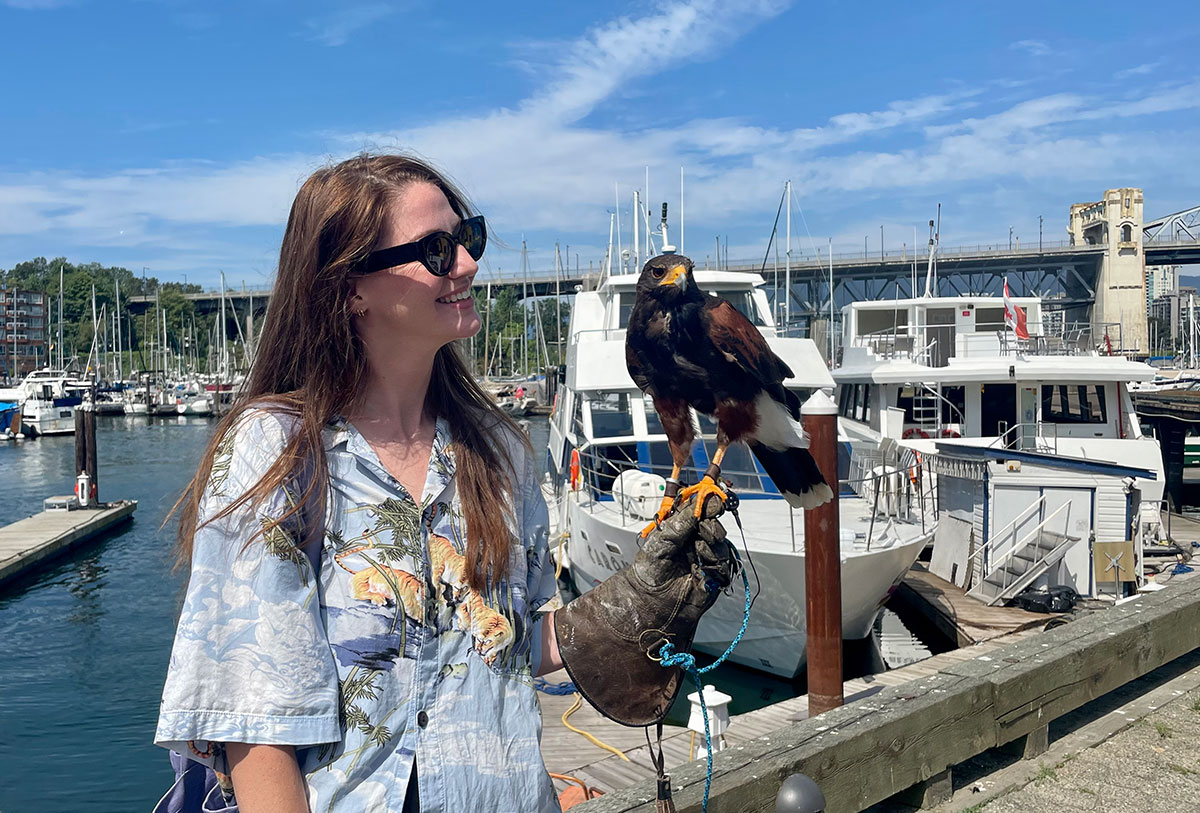
What’s the most surprising part of the job?
My relationship with Hercules. When I started this job, I was actually reluctant to work with a predator that big. They’re daunting, they’re so strong, they absolutely have the capacity to hurt you. But the surprising thing has been the richness and depth of the relationship that I’ve formed with him, and just seeing that these birds are more than scary predators. They actually have these really amazing personalities and can be quite sweet.
We were out on the aviary floor one day and I tossed a stick, and Hercules brought it back and we just started playing with it. Seeing how playful and inquisitive they are, it just blew my mind. I think a lot of people assume birds don’t have personalities, but they absolutely do. And if they’re comfortable with you, they’ll open up. That trust is reciprocated.
Now I can have this big bald eagle hanging out on my glove, inches from my face. People sometimes say, “How can you have that thing so close to your face?” But he’s not a thing — he’s my big baby boy. I know he doesn’t mean me harm, and he knows I don’t mean him harm. And that’s the job. That’s the dream with every bird we work with — that they know we’re here to help them reach their best, and if we’re doing our jobs correctly, you end up with an amazing team of birds that looks forward to waking up in the morning. ![]()
Read more: Labour + Industry, Environment



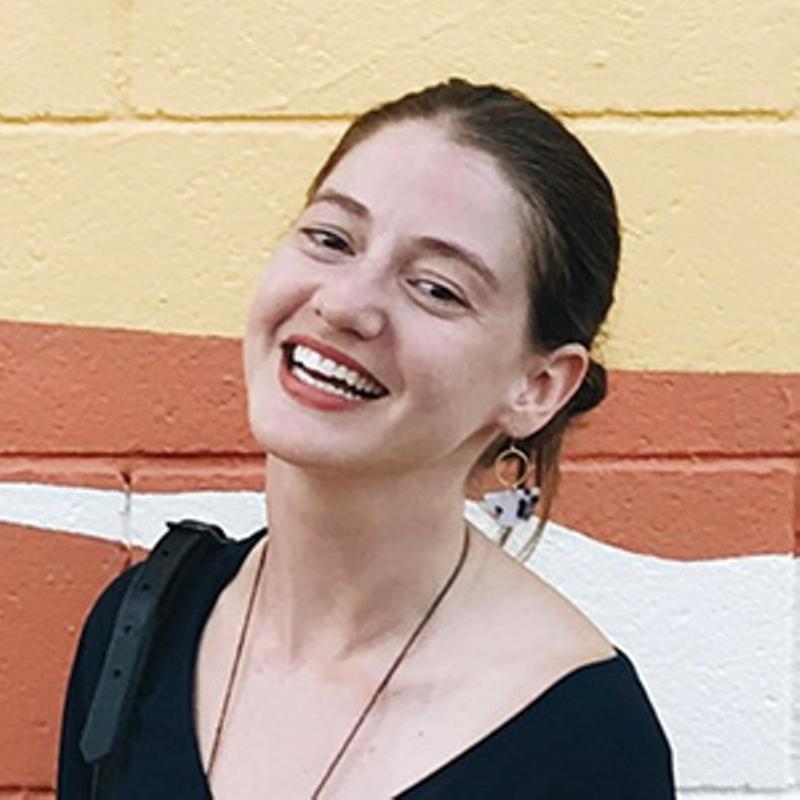
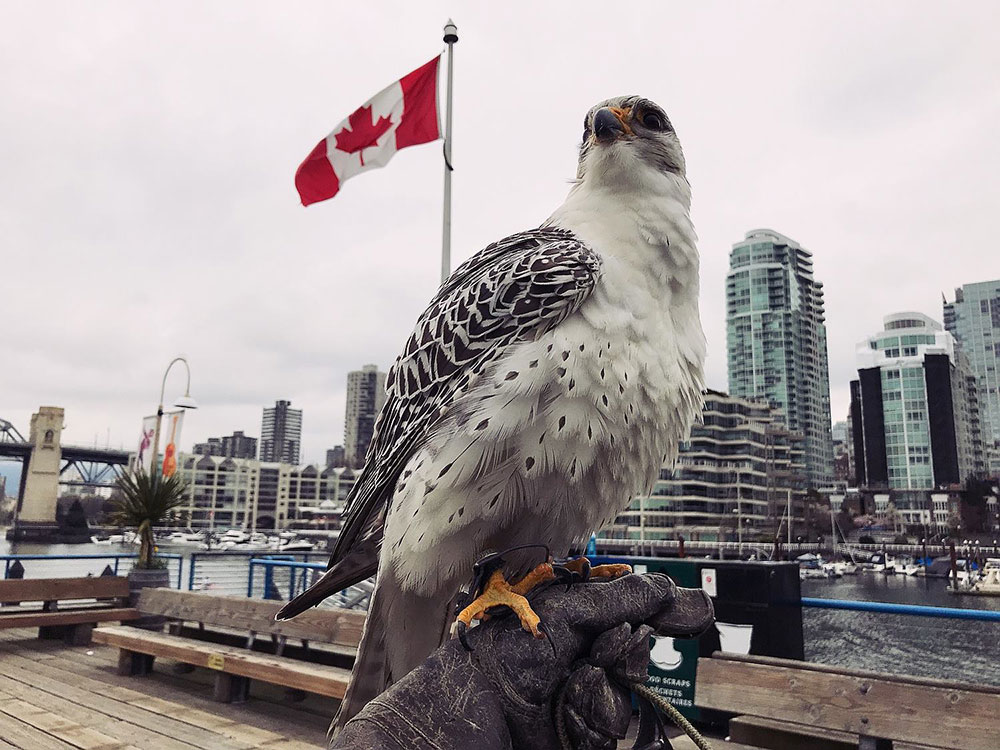












Tyee Commenting Guidelines
Comments that violate guidelines risk being deleted, and violations may result in a temporary or permanent user ban. Maintain the spirit of good conversation to stay in the discussion.
*Please note The Tyee is not a forum for spreading misinformation about COVID-19, denying its existence or minimizing its risk to public health.
Do:
Do not: